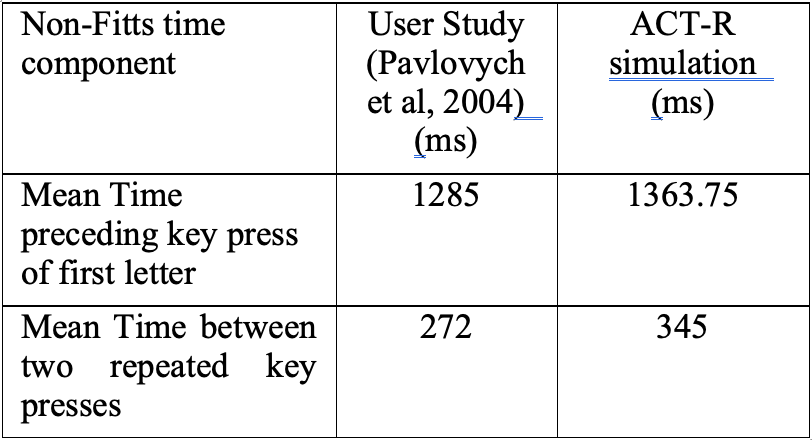
A Cognitive Simulation Model for Novice Text Entry on Cell Phone Keypads Inproceedings
Arindam Das, Wolfgang Stuerzlinger
Abstract:
Motivation - To create a cognitive simulation model that predicts text entry performance and learning on cell phone keypads by novice users. Research approach - A programmable cognitive architecture, ACT-R, is used to execute the simulation model. Part of the simulation result is compared with the result of a previous user study. Findings/Design - The proposed model is an a priori model (not tuned to any real user data) that predicts the amount of time spent in finding a key on the keypad and pressing it repeatedly. The predicted amount of time in finding a key differs by 6% and the time between two repeated key-presses of the same key by 27% compared to the results of a previous user study. The model also captures the learning of keypad layout by novice users. Memorization of keypad layout is simulated using task repetition. Research limitations/Implications - This research has several limitations described towards the end of this paper. An important one among them is that the work does not model the impact of visual distracters in the field of view (frontal surface of the handset) on user performance. Originality/Value - This is the first cognitive simulation model of novice user's text entry performance and learning on cell phone keypads. Take away message - This work introduces an a priori congnitive model of text entry by novice users. This forms a basis for systematic exploration of keypad designs for cell phones in shorter time and lower cost.
